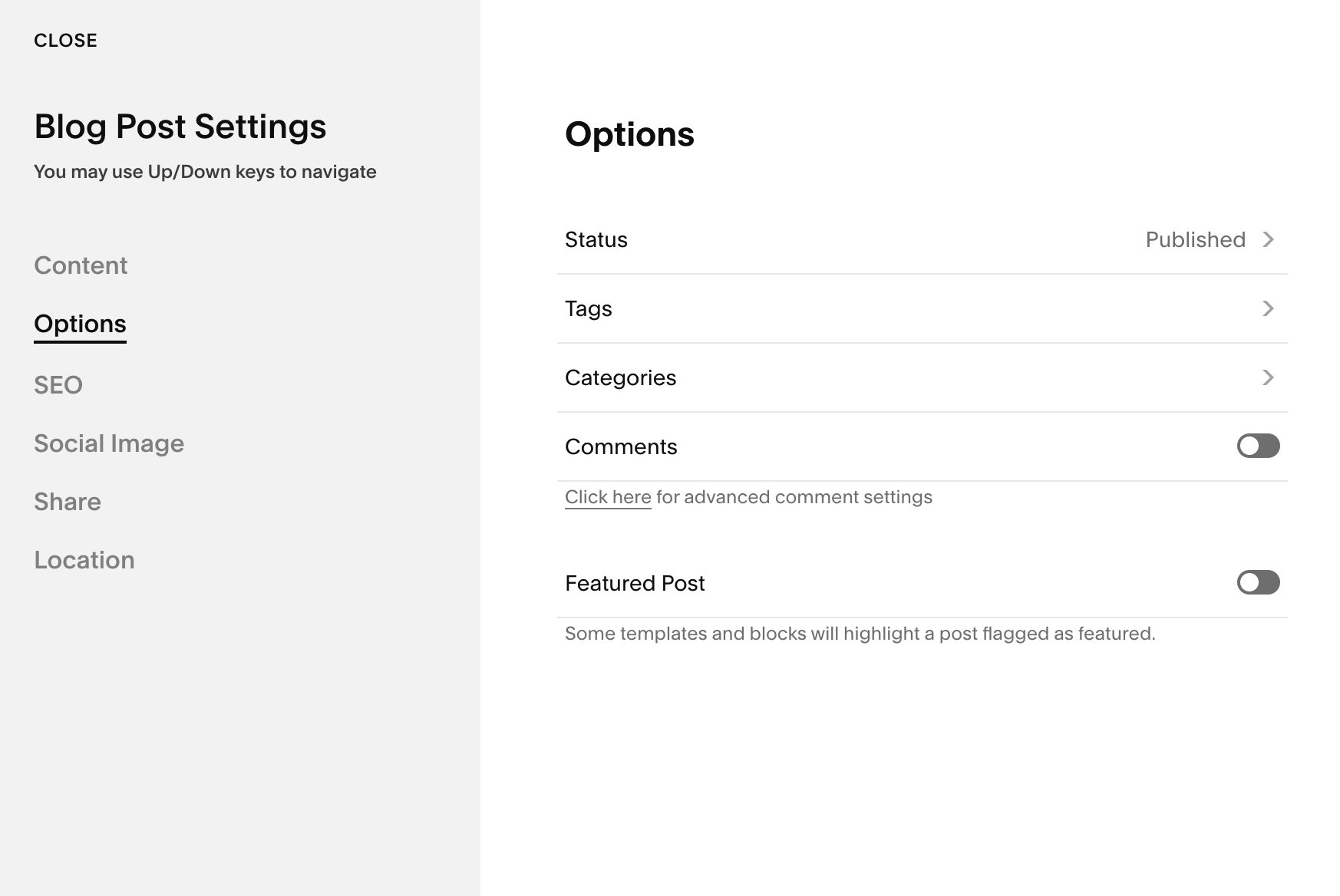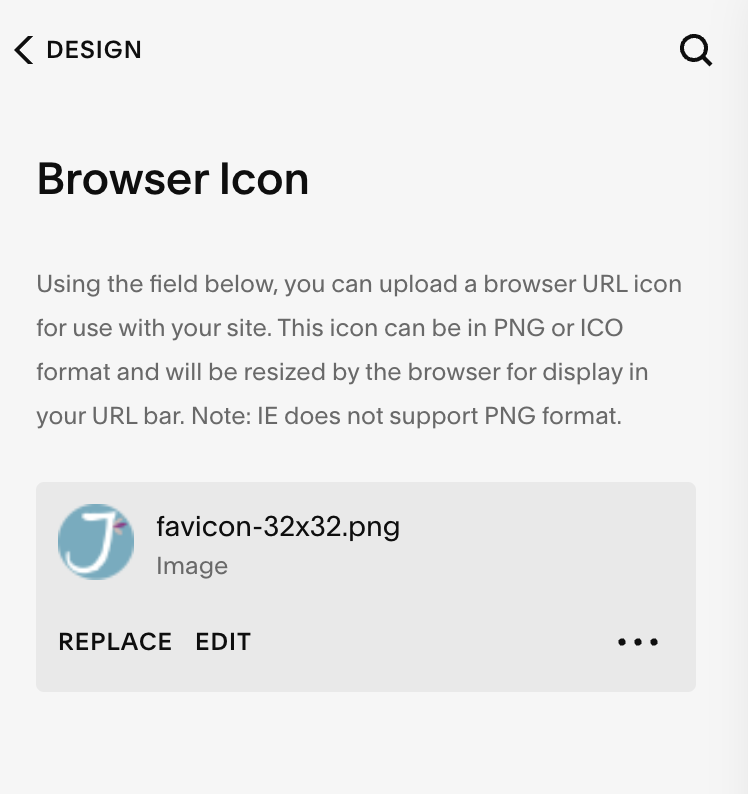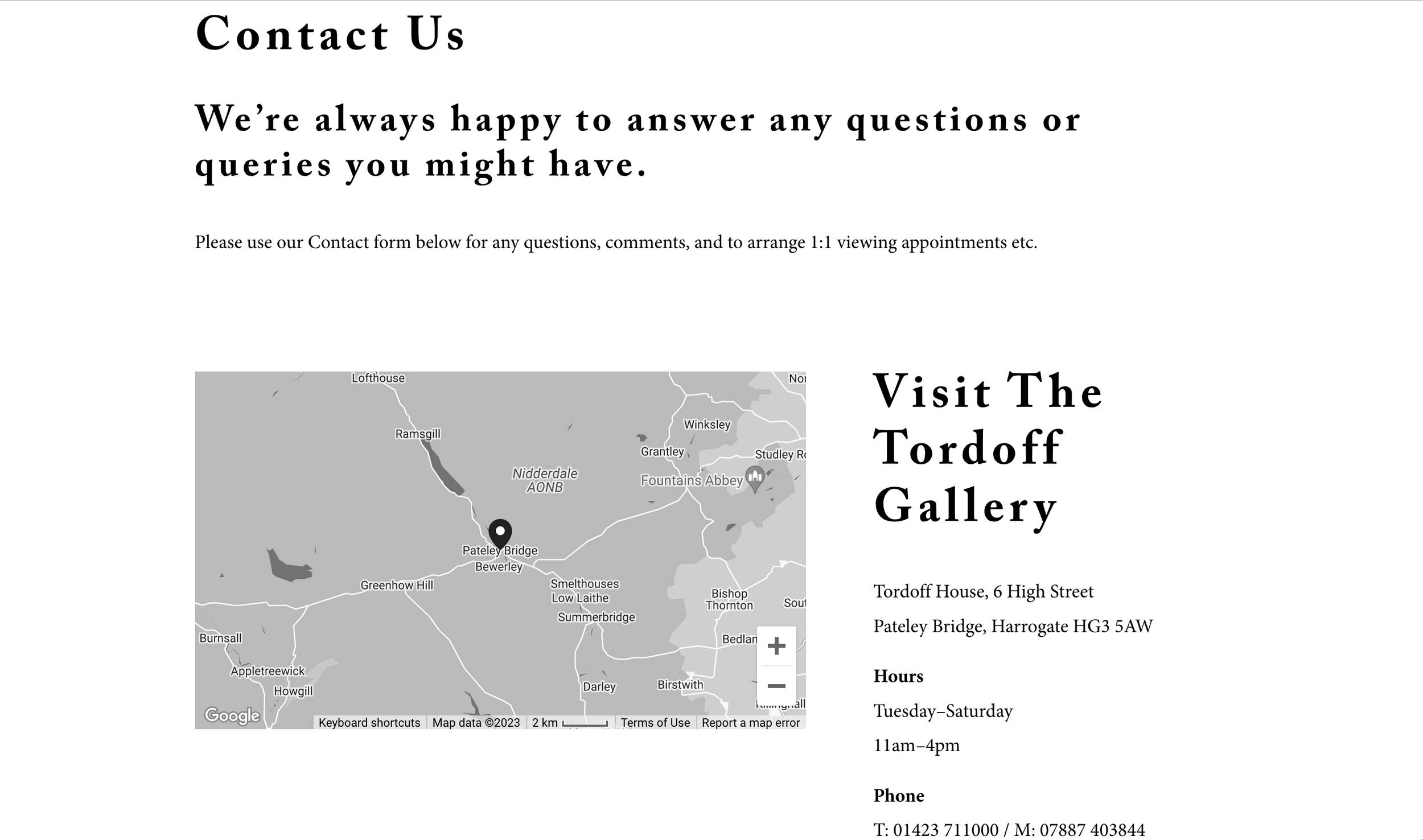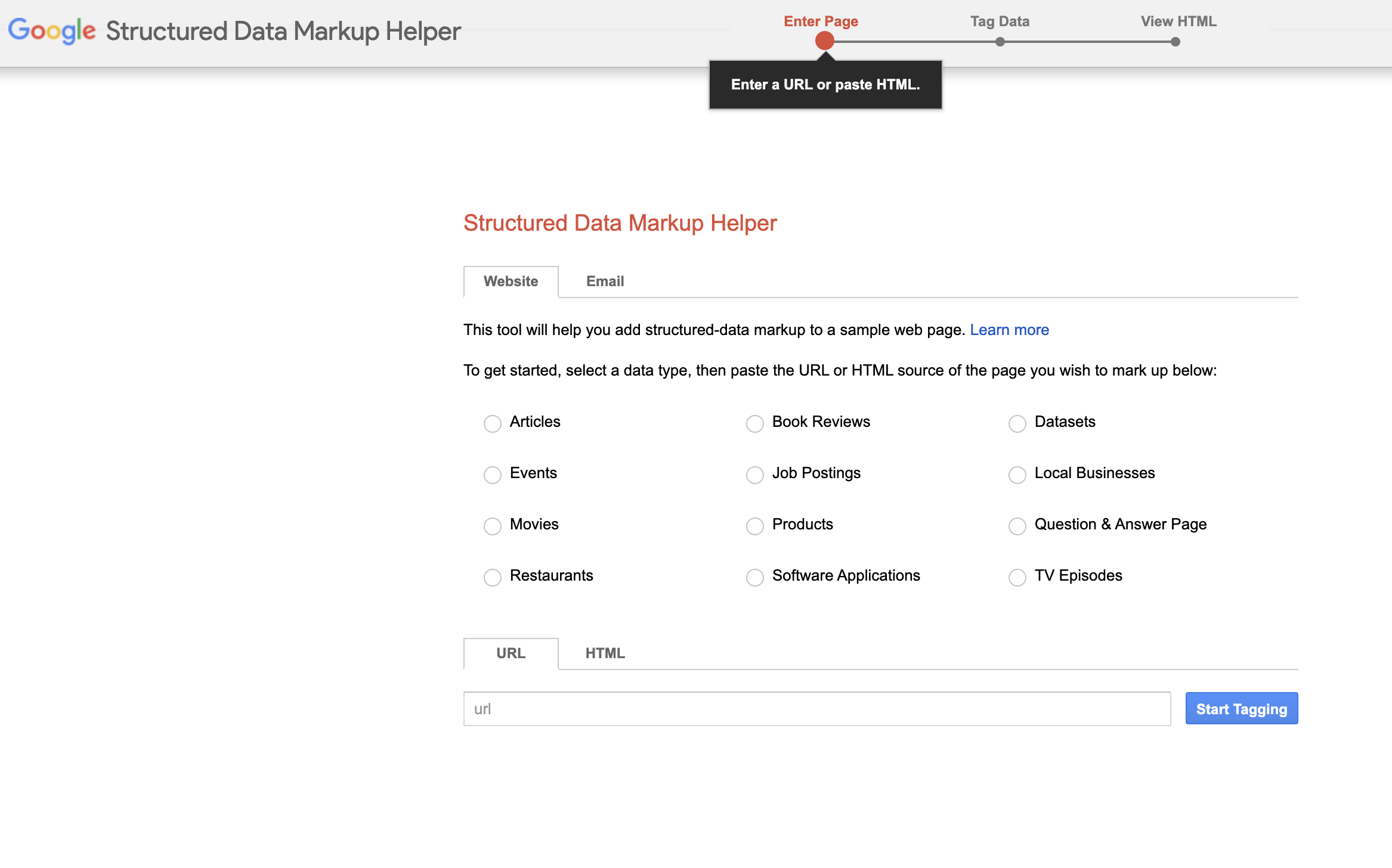27 Best Ways To Rank Higher With Free Squarespace SEO Checklist
In this extensive blog post and my accompanying free Squarespace SEO Checklist (sign up for the download below), I’m going to spill the beans on reliable ways to optimise your website for SEO.
Whilst I am a Squarespace website designer, what I share below should apply to most website platforms.
Previous Me and SEO
Don’t do this. Years ago, when I was a full-time artist, I didn't pay much attention to the basics of SEO optimisation. I wrongly assumed that if I was passionate about my subject and had achieved a level of excellence with my art, my audience would 'magically' find me. Can you relate? I thought that if I blogged regularly and authentically, this would somehow bring more traffic to my site. Over time, I realised that this wasn't the case, and I started to dabble on and off with SEO.
Sometimes, I took the time to consider keywords, and on occasion, I added meta tags and included keywords in my blog posts, but largely, I was still in denial about their relevance to me. How wrong I was!
I wish I’d known what I know now and that’s why I’m passing this information on to you.
Common Misconceptions About Squarespace SEO
I’ve occasionally heard people question Squarespace’s SEO but I’m here to tell you that the opposite is true.
ALL Squarespace sites are built for clean indexing by search engines. Squarespace has put a LOT of effort into improving its SEO in recent years and I believe that these improvements can allow you to fully optimise your Squarespace site for search engines but how you present it plays a big role in how well people can find you.
Below is a quick summary of what you get with SEO Squarespace. However, read on for my SEO recommendations for Squarespace (most will also apply to other website platforms) and learn how you can maximise and optimise your site.
Here’s some of what Squarespace does for SEO:
Site Map - Squarespace automatically generates and links a proper sitemap.xml Site Map.
Clean static URLs - this means that all pages and collection items on your site can be easily read and indexed by search engines.
Structured Data - this helps Google to understand and classify pages and their content. Squarespace automatically generates structured data using these schemas:
Blog post
Event
Local business
Organization
Product
Website
Automatic Tagging - this ensures that proper meta tags for pages, images, and links are automatically generated.
Google rich image - products will display additional information in rich search results. These search results can include the product name, product image, description, price range, availability, and product URL.
Built-in mobile optimisation - giving your site a higher priority in search results.
Clean HTML markup - indexable by search engines.
Enable AMP or Accelerated Mobile Pages for faster loading.
Built-in meta tags - Squarespace automatically adds HTML <meta> tags to help search engines identify your site's titles and page content, when you add SEO descriptions.
SSL certificates - SSL-secure that’s free for all Squarespace domains and connected domains.
Automatic redirects for multiple domains - Squarespace says: ‘Connecting multiple domains to one site is helpful because it gives visitors more ways to find you, captures common misspellings, and keeps competitors from registering similar domain names’.
Search engine and page descriptions - no need to worry, these are built into page and blog post settings for you to complete.
Google Search Keywords Analytics - use Squarespace’s built-in integration to connect your site to Google Analytics for visitor tracking and other reporting.
When it comes to SEO, as with all platforms, you need the winning combination of the right approach and strategies, along with making the most of Squarespace’s built-in SEO features.
Need an SEO analyzer tool? Neil Patel is an SEO expert and if you run your site through this app, it will check its ‘health’ and make recommendations for any critical errors that it may come across. (Free and paid versions available).
SEO and The Big Picture
What is Organic Search Engine Optimisation (SEO) and Why It’s Important?
Firstly, we hear a lot of talk about organic SEO. Basically, this refers to the ongoing process of optimising your website to achieve higher search engine rankings without paying for ads.
You do this by making changes to your website's content structure and settings to improve its relevance and credibility to search engines. This means that your website can appear higher in search engine results pages (SERPs) for relevant search queries, which will hopefully lead to increased traffic, engagement, and conversions.
Google Search Algorithm
Google likes websites that are actively adding regular content because it shows that the site is active and up-to-date. This means that the website’s relevance and credibility to Google’s search algorithm can help it rank higher in search results. Also, adding new content keeps new and existing visitors coming back for more, which can lead to increased traffic, engagement, and conversions. All good!
1. Squarespace Blogging Tips
I’d always recommend blogging with Squarespace and adding new, high-value content via your blog. This will attract your ideal customer and allow more people to find you via a Google Search, giving you more opportunities to rank higher.
Use Blog Categories and Tags For SEO
By using categories and tags within your blog posts, not only are you helping your visitors find your content more easily, so they may peruse more content (great for SEO), but this also makes it easier for search engines to understand the content of your site and potentially move you up in rankings. Categories help to group similar content together, and tags provide more specific information about the content of your post.
Page Content for SEO
2. Headings H1, H2, H3
When creating content, make sure to add keywords to your H1, H2, and H3 headings (HTML tags are automatically added to headings and other key text on your site) because search engines use them to understand the structure and content of your webpage.
Squarespace produces clean HTML markup that is indexable by search engines. By including relevant keywords in these headings, you help search engines identify the main topics of the page and rank them accordingly in search results.
Another great benefit of headings is that they help break up your content into digestible sections, making it more engaging and easier for your visitors to read.
3. Optimise Your Domain Name
If you have a new site, consider your domain name and include your main keyword. This could be your name, or what you do.
4. Optimise Blog Posts and other URLs
Keep blog post URLs to the main keywords and take out any ‘filler’ words such as ‘and’, ‘if’ etc.
Bonus: Be careful with your Squarespace URLs and ensure that the slug has not created a random string of characters (especially if you have duplicated a page, blog post, product, etc). Edit it before publishing.
Links For Your Site
5. SEO Rankings and Broken Links
In a previous blog post, I discussed why broken links are harmful to your website and SEO, and how to fix them. It’s super important to regularly check for broken links on your website because if there are too many and visitors are clicking away because they cannot find what they need, this can also negatively affect your Google rankings. If you find broken links on your site, you’ll need to create 301s or 302s.
Internal links: By sprinkling your site with lots of internal links, you’re encouraging your visitors to stay on your site. This is obviously seen as favourable for search engines and can lead to increased credibility and authority for your site.
External links: High-quality external links are great for your site because not only do they potentially bring more traffic to your site, but they can also help to increase your website's credibility and authority in the eyes of search engines.
When you have reciprocal high-quality backlinks linking to each other's content, search engines interpret this as a signal that your content is valuable and relevant. This can also lead to a higher search engine ranking and more visibility for your website.
Here’s a helpful guide, Google has recently published an article on link best practices.
Note: Remember to only include high-quality links that reflect the content of the page and are from reputable sources, as the opposite can have negative consequences for your ranking.
Tip: Always have external links open in a new window, that way the visitor is more likely to continue engaging with your website.
6. Anchor Links
Anchor links are the text that users click on to access a link. This is important for SEO because it provides context to search engines about the page that the link is pointing to.
When you use relevant and descriptive anchor text, it helps search engines provide more accurate results to other users.
Additionally, using anchor text can help to improve the user experience by providing more accurate information on the linked page before the visitor clicks on it.
7. Create A Custom 404 Page
Custom 404 pages are important for SEO purposes because they ensure that visitors who land on a broken link are navigated to a page that is relevant to your website, rather than leaving them with a generic error page. This can improve your user experience and decrease your bounce rate, which can have a positive impact on your search engine rankings.
Additionally, a custom 404 page can provide an opportunity for you to guide users to other relevant content on your website and keep them engaged with your brand.
Below is an example of my custom 404 page.
8. Quick Loading Pages
To keep your pages nimble and loading quickly, it’s advised to keep to the following:
Image size: Keep your images under 500 kb.
Reduce page size: Keep page content under 5 Mb.
Wherever possible use the .jpg format and limit Gif files - max 5-10 secs
9. Squarespace SEO For Images
Add file names and descriptive alt text to images - For example, not 123abc.jpg. Alt text is for assistive screen users and to help search engines understand the content of your image.
If you don’t think alt text is important, one-third of all Google searches are for an image.
Remember to reduce any image file sizes before adding them to your website.
Tip: I use Tinyjpg
10. Adding a Browser Icon (Favicon)
Adding a browser icon, whilst this doesn’t affect your search rankings directly, does help with visual branding as this may show in Google search results and elsewhere on the web.
11. Hide Squarespace Pages
Hiding pages from search engines that you no longer want is a good idea. Also, consider doing the same for pages that you don’t want users to see such as ‘thank you’ pages etc.
Note: If you do make adjustments, they won’t take effect until Google re-trawls or re-indexes your site.
12. Squarespace SEO Settings
For all these settings, remember to use 1+ keywords wherever possible, giving clear details about what the user will find if they click.
Watch this: Squarespace video on setting up SEO and SEO collections.
Site Title - Even if you are using a logo, you must still include your site title which is recommended to be under 60 characters in length, with 1+ keywords.
SEO Site Description - The number of characters that are recommended has varied over time from 155 to 320. I follow Yoast’s advice when it comes to meta descriptions and keep it to a max of 155 characters. Remember to make this relevant to your ideal client and include keywords.
SEO Descriptions for Pages - These should be different for each page (Google can penalise duplicate meta descriptions) and reflect the content of your pages as well as for blog posts, products, and events. Again, I would stick with 155 characters and be relevant to your user.
*Format Page Titles and Title Formats - this is where you can adjust how you would like your titles to appear in browser tabs, social shares, and search engine results. You can set these for Page Titles, Homepage and collection items like blog posts.
Bonus: Don’t use ‘&’ in titles, or blog post URLs because it can cause technical issues with the URL and may not be recognised by search engines. Instead, it is best to use a hyphen or underscore to separate words in the URL.
Note: *Remember that SEO titles appear in search results and browser tabs, and are indexed by search engines.
It’s important to add an SEO title for each page because if they don’t have their own description, it will default to your site’s description and Google can penalise for duplicate meta descriptions.
You’ll want to include keywords for search engines. You can also add SEO titles for individual collection items, like blog posts, products, and events.
Navigation titles: These create links in your nav menu and it’s recommended to keep these short, like ‘About’ or ‘FAQ’.
13. SSL Certificates
Ensure SSL is enabled (free for all Squarespace domains and connected domains) because if you don’t, Google may penalise you in search engine rankings because Google favour secure sites.
SSL enabled is good for SEO because it provides an added layer of security for your website, which is a positive ranking signal for search engines.
In addition, having an SSL certificate ensures that any information entered on your website, such as user login information or payment details, is encrypted and protected from potential hackers. These steps are so important as they increase user trust and confidence in your website, leading to increased traffic and engagement.
14. Website Protection
Over in Squarespace Advanced settings, I would recommend activating Clickjack Website Protection as this option can help to prevent malicious sites from embedding your content. Turning this off will allow other site owners to iframe your content into their pages.
15. Connect To Social Media
Social media can also drive traffic to your site. With your Squarespace website, don’t forget to set up social links to your media profiles so that visitors to your site can find you elsewhere on the net.
Share buttons are not set up for Squarespace 7.1 but I gather that will be coming in the not-too-distant future. A workaround is to use Add This or Shareaholic.
In addition, set up Connected Accounts within Squarespace which can push/pull your content from media sources.
16. AMP For Mobile Friendly Pages
Accelerated Mobile Pages mean that lightweight versions (stripped-down HTML without styling) of your blog posts with AMP formatting are produced which can help load speed on mobile devices. However, in 2021 Google changed this as a ranking factor and now emphasises good quality ‘Core Web Vitals’.
If you don’t have a blog, little content, or lots of code I’d consider NOT activating AMP as it can interfere with that.
You may want to check how your blog posts will look by adding the following to the end of your blog URL: ?format=amp
I have decided to turn AMP off because of the ‘styling interference’.
17. Built-In iPad and Mobile Optimisation
All Squarespace sites are mobile-friendly and search-engine-friendly just as long as you don’t disable mobile styles or overload your site with too much content, your site is ready to be found in mobile searches.
In addition, thanks to Squarespace 7.1 Fluid Engine launching in July 2022, it’s now possible to independently optimise for desktop, tablet landscape and vertical, and of course, mobile.
18. Optimise Your Site For Voice Search
You should consider the language, your tone of voice that you’re using across your site. It needs to be conversational, natural and with a human-sounding tone. So, not too formal, or too technical.
Additionally, try to think about the types of questions that visitors to your site might ask related to your content and incorporate the answers to those questions in your content.
Tip: Remember to optimise your site for local SEO, as people often use voice search to find local businesses and services.
19. Page Speed and CSS
Be careful with how much CSS is on your site because in some cases this can slow down your site which can impact your rankings.
Check through the CSS to see if some can be removed, or perhaps needs editing. You may want an expert to look at it for you.
20. Generate and Submit Sitemap XML File
This is a must!
For better visibility in search results and in order to prompt search engines to crawl and index your new website, updated and subsequent content, you need to let them know that you have content available. You do this by submitting your site’s sitemap XML file which is easy to do within Squarespace. More on this is below.
You can also submit your sitemap to Bing. To do so, you would need to go to Bing's Webmaster Tools and follow the instructions to submit your sitemap.
21. Verifying With Google Search Console
Don't forget to keep Google aware of any fresh or updated content, such as pages, blog posts, or products, on your website. You can do this by submitting the URL via Google Search Console, as this can also help to improve your SEO.
Bonus tip: Pop up’s - make sure that your content is viewable across devices and that any pop-up isn’t covering the screen and therefore impacting your SEO ranking.
Login to Google Search Console to check that there are no problems with visibility across devices and to correct any pages with issues.
22. Optimise for Local SEO
If you run a business with a physical location, remember to include your business address on your site and below are some places where you can add this information:
Text blocks on a contact page
Text blocks in a footer
Signing up for Google My Business can also help your local search ranking. See #23.
Below is an example of using a map block for a client of mine who runs a local business.
23. Google My Business
Google My Business is a useful integration that Squarespace supports and that can help with SEO. Don’t have a Google My Business account? No problem, just follow the prompts and once it’s all integrated, you can push and pull data from your website to Google automatically.
It pulls information such as reviews, your map, pricing, and hours, and displays it in search results.
Adding your business to Google My Business can increase your visibility in local search results, and having accurate and up-to-date information can improve your credibility with potential customers.
To set up within Squarespace:
From the Home menu, go to Marketing, then Location Management
Select Add Location
Click Import from Google.
24. Structured Data Markup Helper
By adding structured data to your Squarespace website, you can increase your click-through rates as this helps search engines understand your website content and improve your site’s appearance in search engine results. Squarespace supports JSON-LD structured data, making it easy to implement schema markup on your website.
With schema markup, you can provide additional context and information about your content, such as product information, reviews, and events. This information can then be displayed in rich snippets in search engine results, making your content more visually appealing and potentially more clickable.
Here’s the link for Google’s Webmaster Markup Helper.
25. SEO Keyword Research
This post wouldn’t be complete without reaffirming that conducting strategic preliminary SEO keyword research before you create any content is critical. If you’re going to devote time and energy to creating content, you might as well get your time and energy investment return!
There are free and paid methods that are available for researching keywords and long tail keywords. And remember that Google may penalise you for keyword stuffing.
Tip: Keyword stuffing is when you fill a web page with keywords in an attempt to ‘trick’ rankings in Google Search results. Perhaps keywords might appear in a list, or group and generally appear unnatural and out of context. A good rule of thumb is to create content for ‘people first’.
A basic, but free option is to start by entering your most relevant one to three keywords and see what comes up in the Google search results bar. Then, use the results strategically to see what comes up and might be useful as part of your content goals.
Bonus: You can also use analysing tools such as CoSchedule Headline Analyzer to optimise titles for blog posts giving you the best possible chance of ranking higher in search results.
26. Squarespace Analytics and Google Analytics
You've gone to all this trouble, so don’t flag now!
It's time to measure the success of your SEO efforts - to learn where your website's SEO is paying off and where you might want to make some tweaks.
Squarespace Analytics and its integration with Google Analytics provide you with details of your website's traffic, visitor behaviour, and search engine ranking.
Warning
Universal Analytics will stop processing new site traffic on July 1, 2023. Google recommends migrating to Google Analytics 4 before that date.
27. Continue To Add Or Edit Content
As your site evolves, remember to keep adding or editing content often in order to give Google regular reasons to crawl your site giving you opportunities to rank higher in the search engine results!
Conclusion
As I always tell clients, you won't see results overnight, BUT it's never too late to start the process.
Yes, it does take time to pay attention to the nuances of SEO, and this can seem pretty boring. BUT if you want to get more clicks over to your website, I believe, it's a necessity.
I can never guarantee search engine ranking results - there is always some individual experimentation involved. But I've found that with consistency and with the help of my Squarespace SEO checklist and the strategies listed above, hopefully, it will move the needle on your business and ultimately lead to higher revenue and business growth.
If you'd like to grab my super handy checklist to follow for your website, please sign up below.
Why not save this for when you’re doing some SEO for your site? Bookmark it and pin for later 👇🏼.



















